 |
|
|
| |
|
Last updated:
02-09-09 |
VHDL offers you many
ways to implement a Synchronous State Machine. In most cases
will the resulting hardware be the same as the synthesize tools
recognize your "intensions" even you trying to "fool the tool".
The example concentrate of the
question - Should you use one, two or three processes for your
State Machine.
|
|
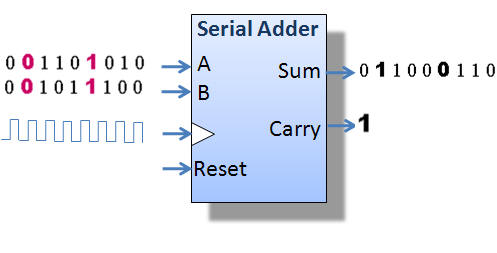
|
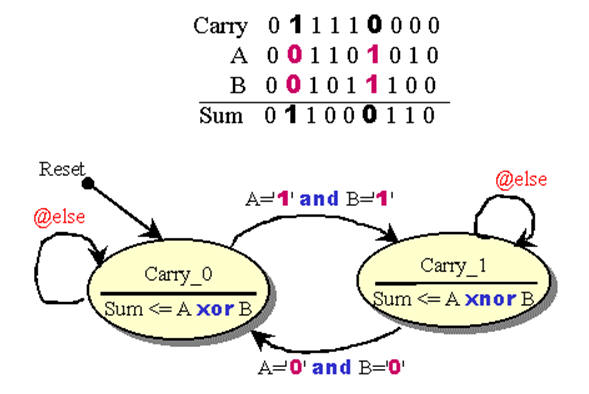 |
In the old days of computer
science (way back in the 1950ies) was hardware expensive and the
need for speed less.
If you wanted to add two number of say 64-bit length would the
cost of a true parallel adder be unbearable (literally).
On the other hand -If you
where willing to use 64-clock pulses would the hardware cost be
reasonable.
|
|
|
| |
|
| |
State
Machine with 1 process |
| |
|
| |
The one process
description of a State Machine comes natural - and
could be considered good practice as well.
However must you be
aware that all signals inside a Clock-driven process
will be assigned to a F/F. That's the reason why a
Mealy output like Sum ends like a Pipelined output.
|
| |
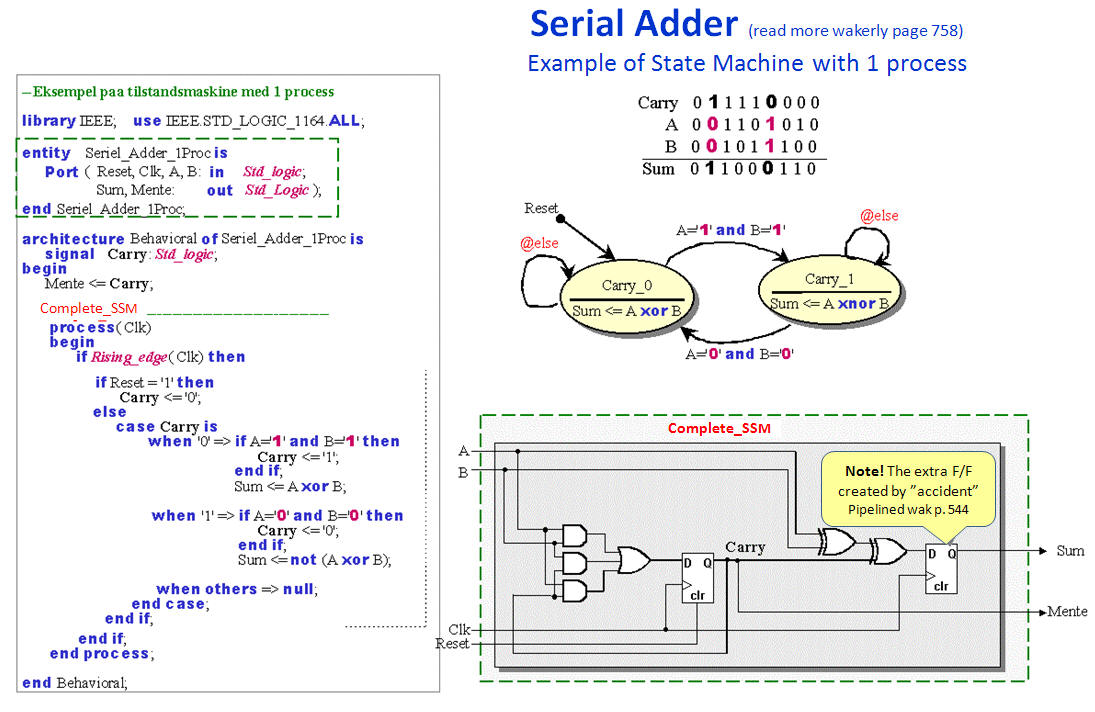 |
|
|
|
| |
|
| |
State
Machine with 2 processes |
| |
|
| |
The Two process
description of a State Machine a good choice for a
Mealy type State Machine.
The Output logic process must of course be a
Combinatorial process - Hence must all inputs and
the Current state be in the sensitivity-list.
An alternative could also be "pure" concurrent code.
|
| |
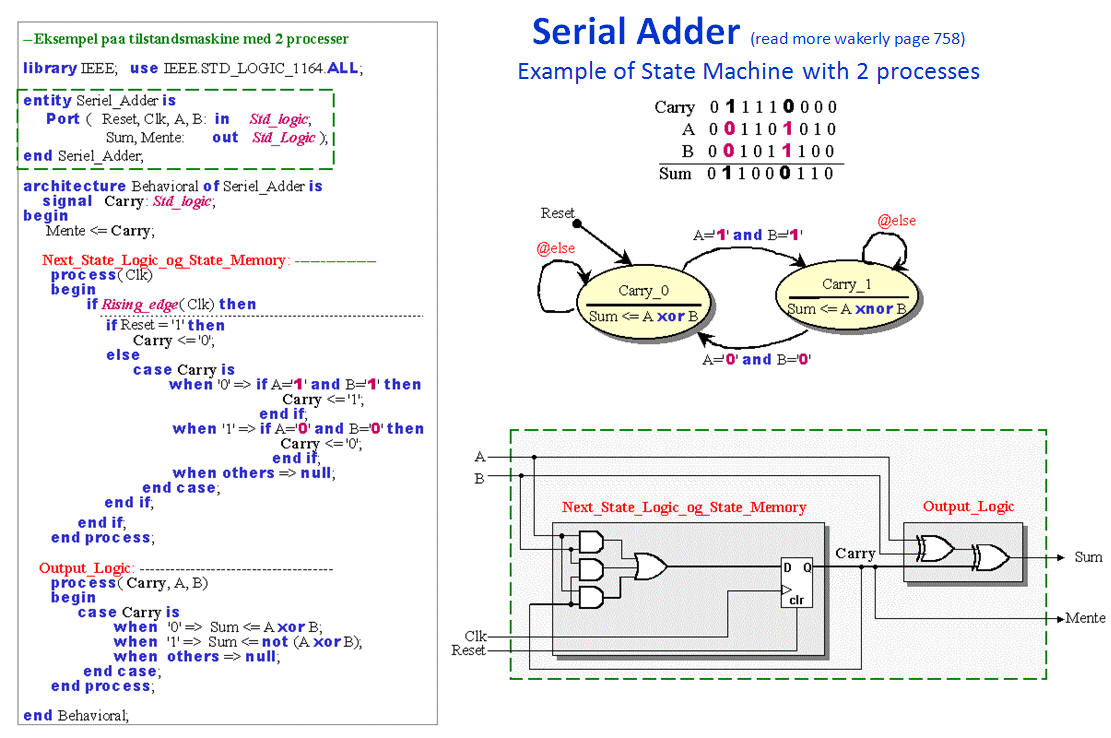 |
|
|
|
| |
|
| |
State
Machine with 3 processes |
| |
|
| |
The Three process
approach could like like a lot of extra effort
without extra gain. How ever must you realize that
as the complexity of the State Machine increases
will the change of errors also increase.
The type errors of the nasty kind - namely errors
which not show up in the synthesize process and only
will show up through simulation and in the real
hardware.By
splitting your design in "pure" combinatorial
process for the Next State logic and a Clock-driven
process for the Next State Logic do you make life
easier for the synthesize tools. The change of
getting this right the first time better.
Please note that
in this example will the 2 Process description
properly be the best choice.
|
| |
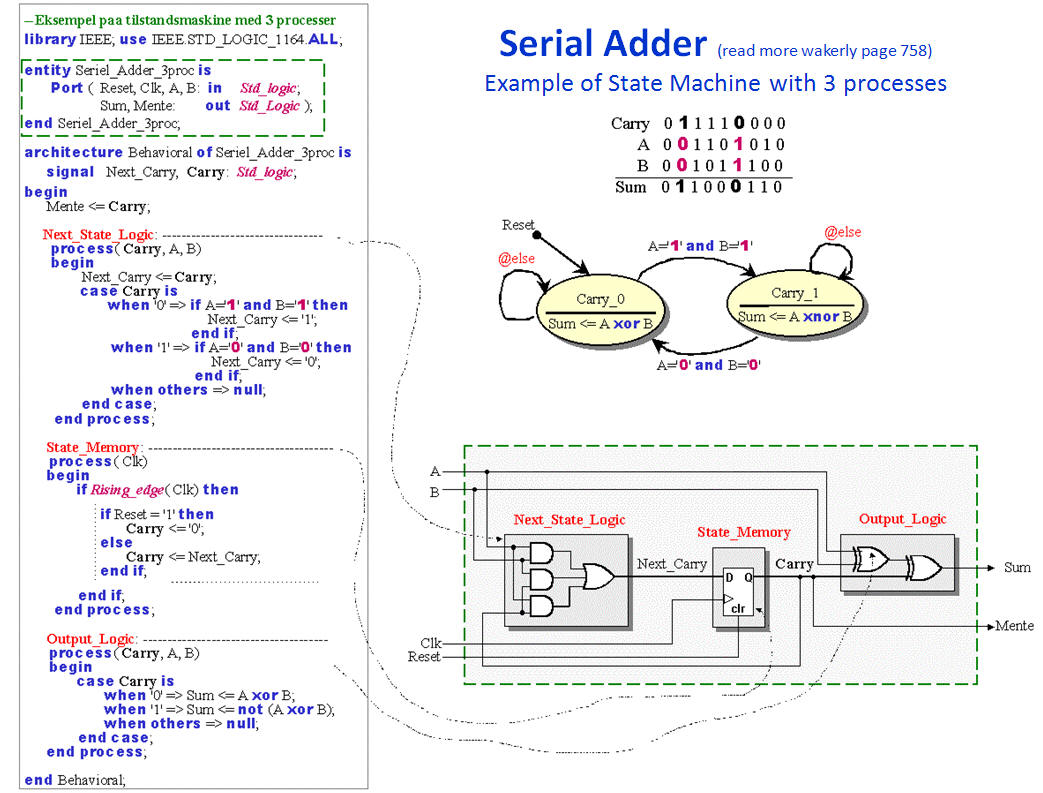 |
|
|
|
|
|
|
|
|
|
|
 |
